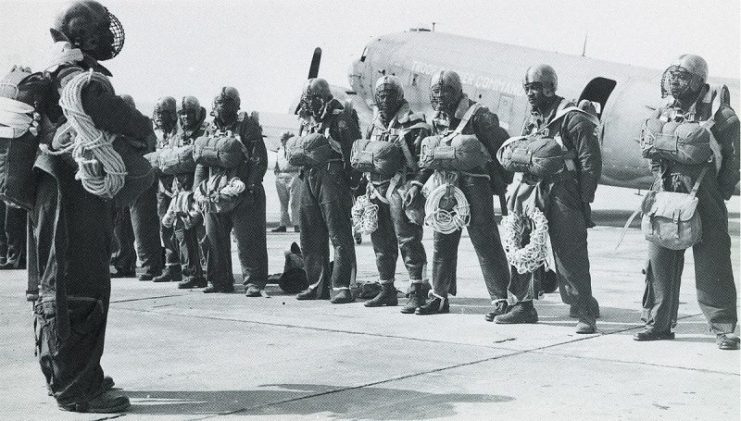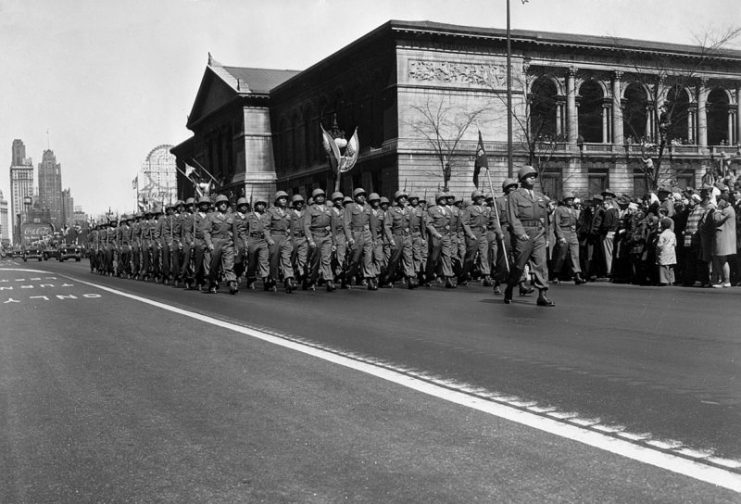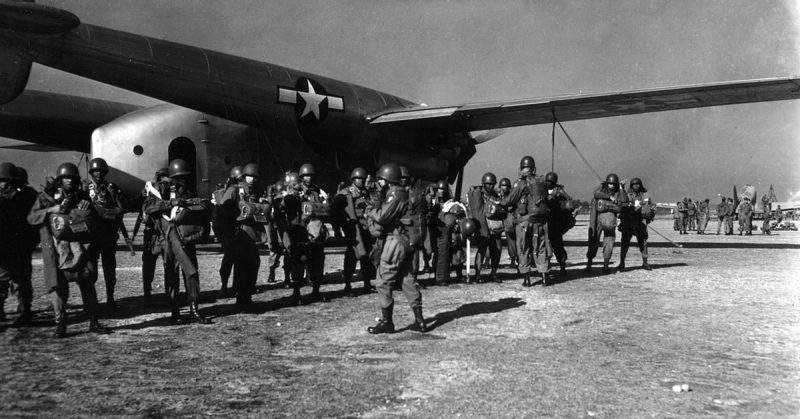The last member of the all-black 555th Parachute Battalion recently passed away in Huntington Station, New York. Clarence Hylan Beavers was ninety-six years old.
Beavers was born in 1921 into an affluent family and grew up in New York City. Unfortunately, the 1929 stock market crash that ushered in the Great Depression, hugely affected the Beavers family. He joined the 369th Infantry Regiment, New York State National Guard, in 1939 but left in the summer of 1940. Owning a restaurant, he felt his time would be better spent taking care of it.
However, in the spring of 1941, he was drafted, just months before the Japanese attack on Pearl Harbor. His previous service entitled him to the rank of sergeant, and he was sent to Fort Dix, New Jersey, as a trainer. He was then transferred for nine months to the newly reopened Camp Lee, Virginia, as a platoon drill sergeant in the 9th Quartermaster Training Regiment.
Afterwards, he was given a choice of First Sergeant in a Transportation Regiment or the Light Ordnance Maintenance Platoon at Indiantown Gap, Pennsylvania. He chose the latter. In 1943, Beavers applied for and gained entrance to Parachute School at Fort Benning, near Columbus, Georgia.

At that time, the United States military was segregated. Black soldiers were assigned mostly to menial work, such as latrine duty, digging ditches, painting buildings, unloading trucks, guard duty and the like. There were no missions or tasks given to African-American soldiers that needed a particular skill or knowledge. At Fort Benning, black soldiers were billeted in their own unheated barracks off to the side; they were required to enter the mess hall by a side door and were not authorized to be in the chow line. They had to sit at a specific table, and their food was brought to them. They were also required to leave by the side door.
When Beavers arrived at the base, he was housed in African-American quarters and met with Brigadier General Ridgely Gaither the following morning. He had been approved for paratrooper training, but the question remained as to where he would serve. There were no black paratrooper units, and mixed units were not allowed. Beavers was assigned to an African-American group, carrying out guard duty at the Parachute School.
Beavers wrote to the Department of the Army complaining that the commander of the training unit had failed to follow orders and admit him to jump training. After several months, his letter was acknowledged as received and a few months later, the Department of the Army issued orders to train black personnel as Paratroopers.
Initially, twenty men were chosen for the African-American Test Platoon. If they were successful, then the remainder of the newly created 555th African-American Parachute Infantry Company would also be trained. Unlike other black units which were commanded by white officers, the 555th or “Triple Nickels” was completely African-American.

Sixteen soldiers completed the training, and in January 1944, they underwent their first test jumps. Brigadier General Benjamin O. Davis of the Inspector General’s Office decided to watch the unit jump and visited the base. Afterwards, the General turned to Beavers, by then a Colonel, and asked, “Colonel, what is the minimum size parachute unit the War Department contemplates using in combat?” Beavers replied that it was probably a battalion. The General asked, “Then why are you training a cadre for a company size unit of black parachutists?” Beavers replied, “That is all the War Department sent us.” A few weeks later, the African-American Test Platoon received orders to train enough men to fill a battalion – between three and eight hundred soldiers.
The “Triple Nickels” were assigned to the north west of the US, to take on the dangerous mission of putting out fires caused by balloons carrying bombs. The Japanese used the eastward direction of the jet stream to transport the balloons to their intended target – the United States.
The 555th paved the way for other black army units and, eventually, to the end of military segregation. A complete history and profile of the members of the 555th Parachute Infantry can be found here or their Facebook page.
